WASHINGTON—You’re more easily distracted than you think.
At the USA Science & Engineering Festival in Washington, D.C., on Sunday, self-described deception specialist Apollo Robbins revealed how he manipulates weaknesses in human perception. He can also control people’s minds—using insights into the human psyche.
1. Flicker Test
Similar photos with multiple differences were displayed on a large screen during Robbins’s presentation at the festival. He had audience members raise their hands based on the number of differences they perceived between the photos. The varying perceptions showed that many people can fail to see sometimes very obvious changes in their surroundings if their attention is divided.
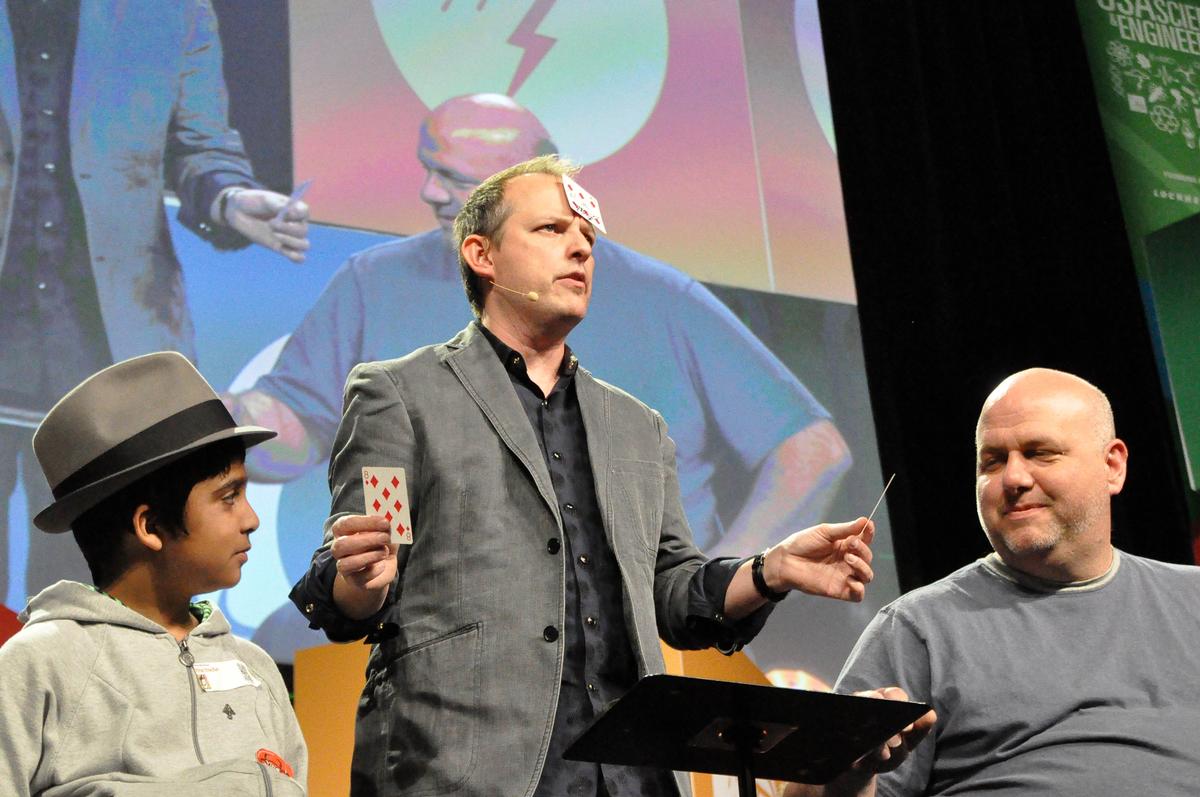
Apollo Robbins (C) shows volunteers cards, demonstrating to the rest of the audience that people can’t see what they’re looking for if their attention is diverted elsewhere—the volunteers are looking for the card on Robbins’s forehead and it takes them a long time and many hints to realize it’s there. (Tara MacIsaac/Epoch Times)
2. Saccadic Eye Movements
Robbins had the audience look at their two index fingers. With this concentration on fixed points, the space in between is actually filled by a memory image. A person becomes blind to what’s presently there.
Magicians induce saccadic eye movement, the rapid movement of eyes between fixed points, to hide their tricks from subjects.
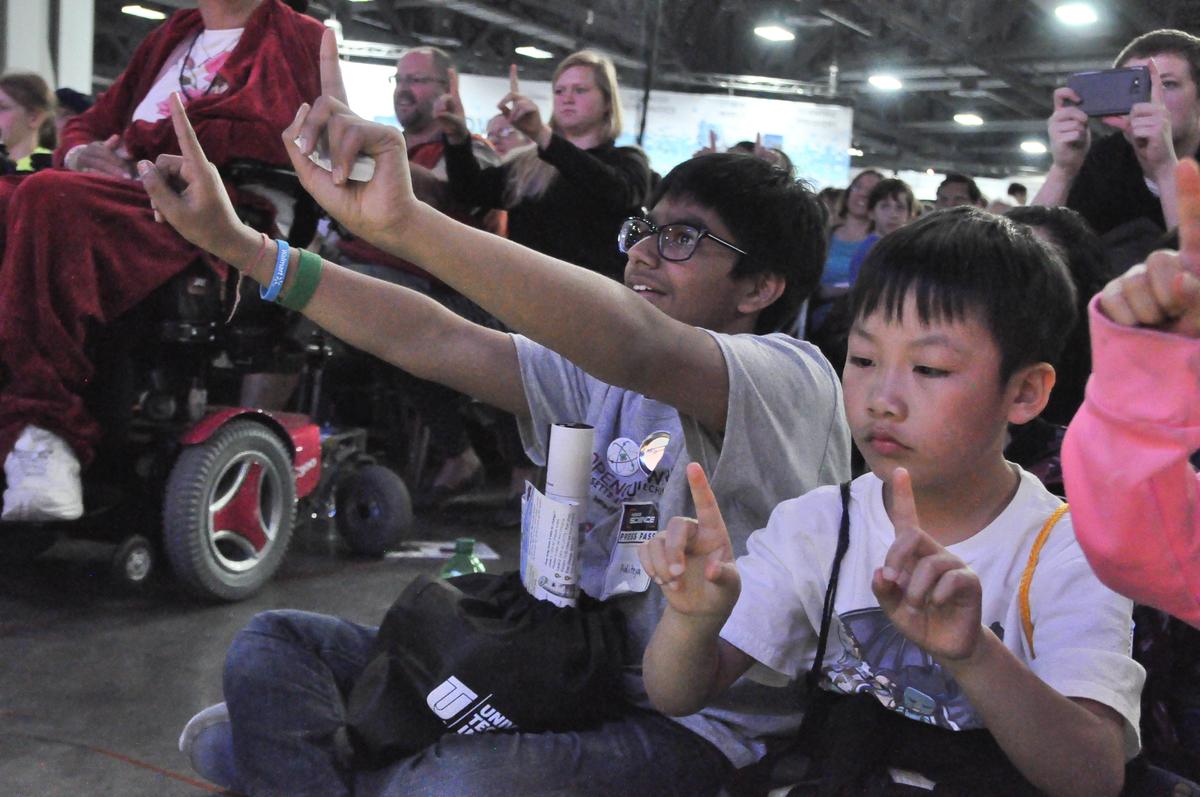
Audience members look at their index fingers as directed by Apollo Robbins as he illustrates a principle of human perception at the USA Science & Engineering Festival in Washington, D.C., April 27, 2014. (Tara MacIsaac/Epoch Times)
A study on human perception as it is manipulated by magicians lead by Stephen L. Macknik at the Barrow Neurological Institute and published in Nature in 2008 states: “Change-blindness studies have shown that dramatic changes in a visual scene will go unnoticed if they occur during a transient interruption, such as a blink, a saccadic eye movement or a flicker of the scene, even when people are looking right at the changes. However, observers can also miss large gradual changes in the absence of interruptions.”
The study noted that magicians have long intuitively manipulated perception, and watching their methods can further science’s understanding of consciousness and cognition.
3. Getting Close
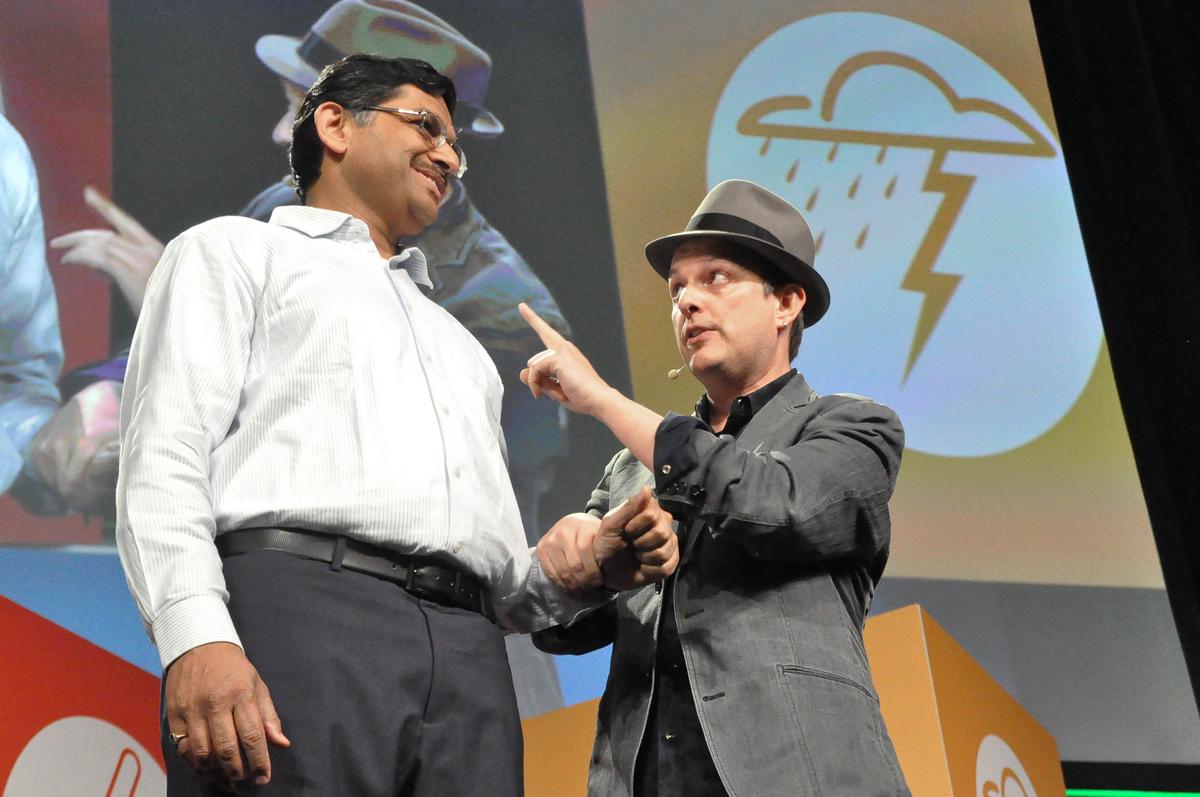
Apollo Robbins gets close to a volunteer so he can nab the volunteer’s wallet and watch and perform other sleight-of-hand tricks. (Tara MacIsaac/Epoch Times)
The more intimate the relationship is between two people, the more comfortable they are getting physically close to each other. People have comfort zones around them—they start to feel uncomfortable if people they don’t know get too close.
A magician tries to subtly get in close without the person feeling anything is unusual, without the person really noticing. This is how Robbins managed to steal the wallet of an audience member.
But how he managed to take the credit cards out of the wallet, seal them in an envelope, and put them into a zipped up pouch inside his jacket remains a mystery—or at least a feat so amazing it stunned the audience even as Robbins demystified illusions.
4. Leading a Person to Make Certain Choices
Robbins uses psychology to predict what choices a person will make and to guide him or her toward the choices that will fit the trick.
He showed a slide in which four different objects were presented to a volunteer.
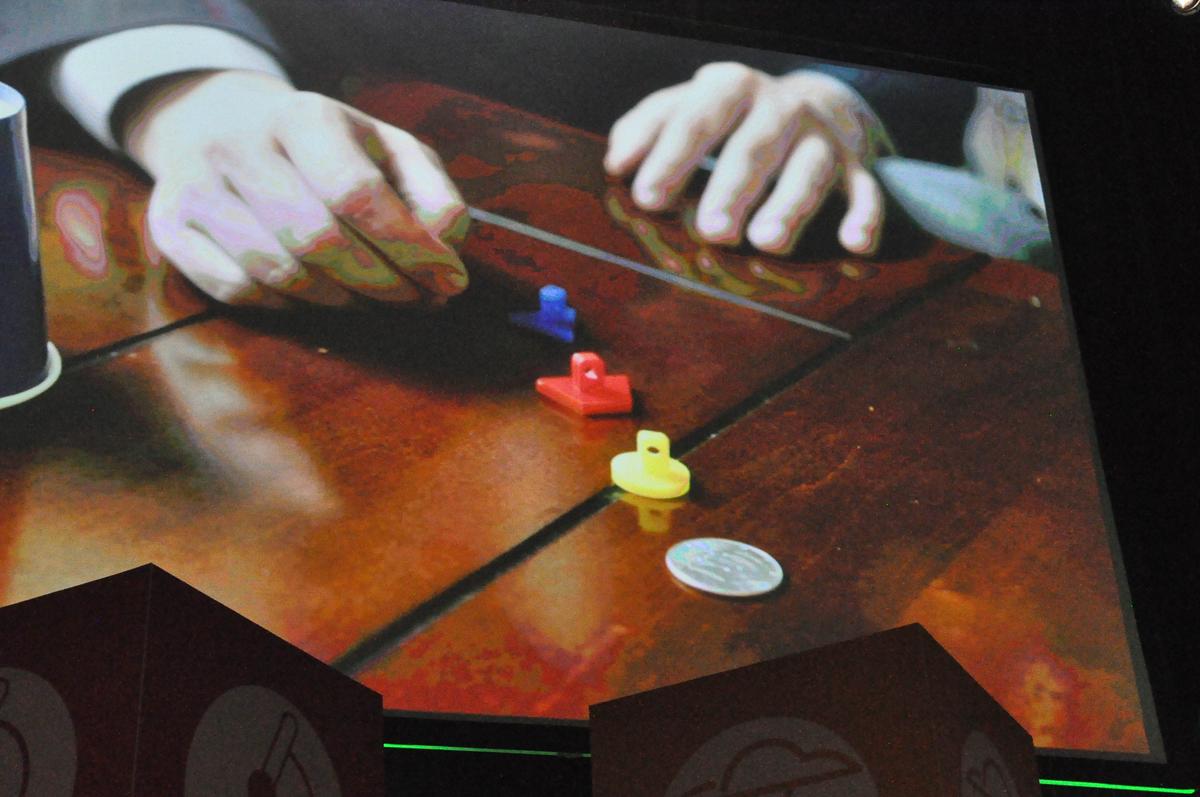
A slide shown at the 2014 USA Science & Engineering Festival by Apollo Robbins. A volunteer in the film was asked to choose one of the four objects before him. (Tara MacIsaac/Epoch Times)
The volunteer was asked to select one of the objects. A cup was lifted under which was an object identical to the one chosen. The object under the cup wasn’t put there by slight-of-hand after the volunteer made the choice. It was there all along on the premise that the volunteer would choose that particular object.
How did Robbins know which object would be chosen?
One of the four pieces was dramatically different from the rest. The volunteer is less likely to pick that one, as it seems like the obvious choice. Robbins then stokes some suspicion in the volunteer by the way he shuffles the other three pieces, subtly guiding the volunteer to choose the yellow piece.
The volunteer is most likely to choose the piece the magician seems to direct him away from. The volunteer’s desire to make the choice independently actually plays into the magician’s trick.
Even after explaining his technique, Robbins successfully guided an audience member to make the choices he wanted in another trick.
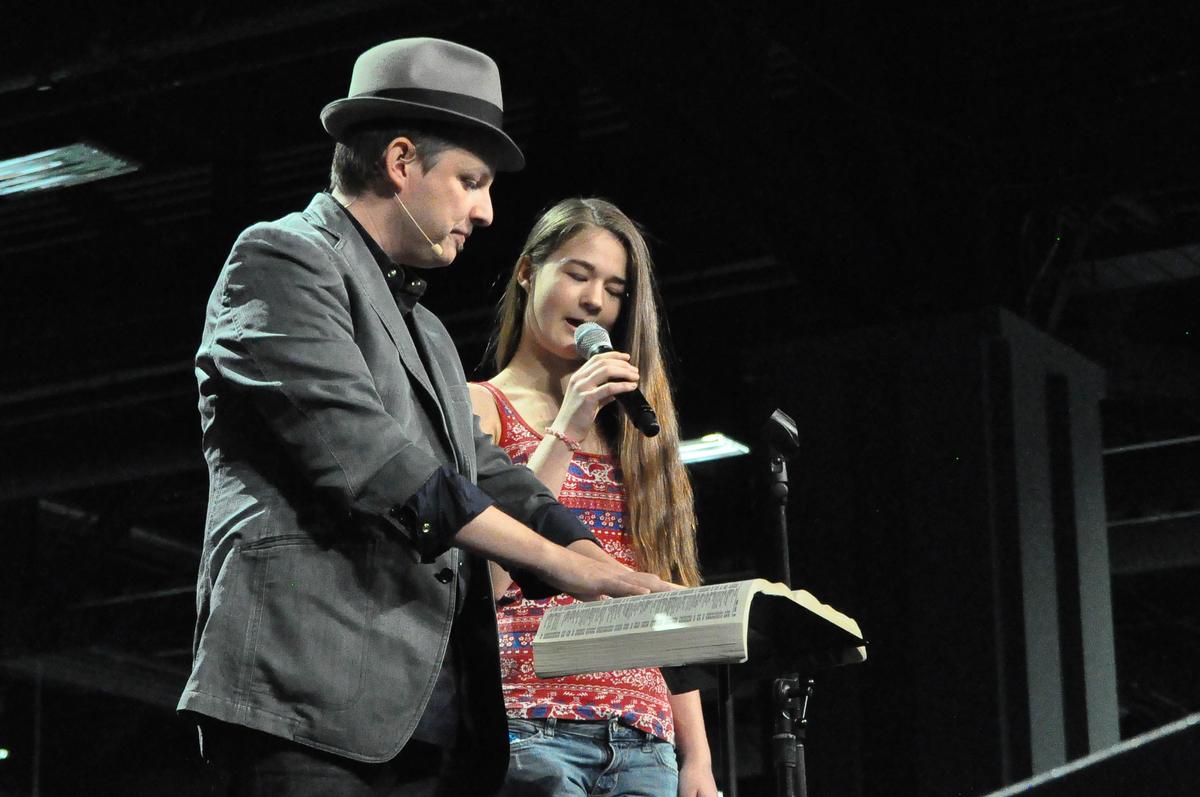
Apollo Robbins (L) has a volunteer choose a number from a phone book, illustrating the subtle ways in which he can guide people to make the choices he wants them to while they believe they are acting independently. (Tara MacIsaac/Epoch Times)
He had a young woman pick a phone number out of a phone book. He directed her through a series of choices, seeming to allow her complete freedom. He had her open to a seemingly random page and gave her the option of flipping to other pages. She declined, deciding to stay on that page. He offered her a choice between the left or the right page. She chose the left. He asked her to choose one of the four rows on the page. She chose the second, and he implied that she was thwarting his attempts to guide her.
He ran his finger along the row and had her tell him when to stop and whether he should his finger up or down.
He got eight other volunteers to hold yellow envelopes on the stage. When the woman eventually picked a phone number, the eight volunteers pulled numbers out of their envelopes. The numbers in the envelopes displayed in order the telephone number she had chosen.
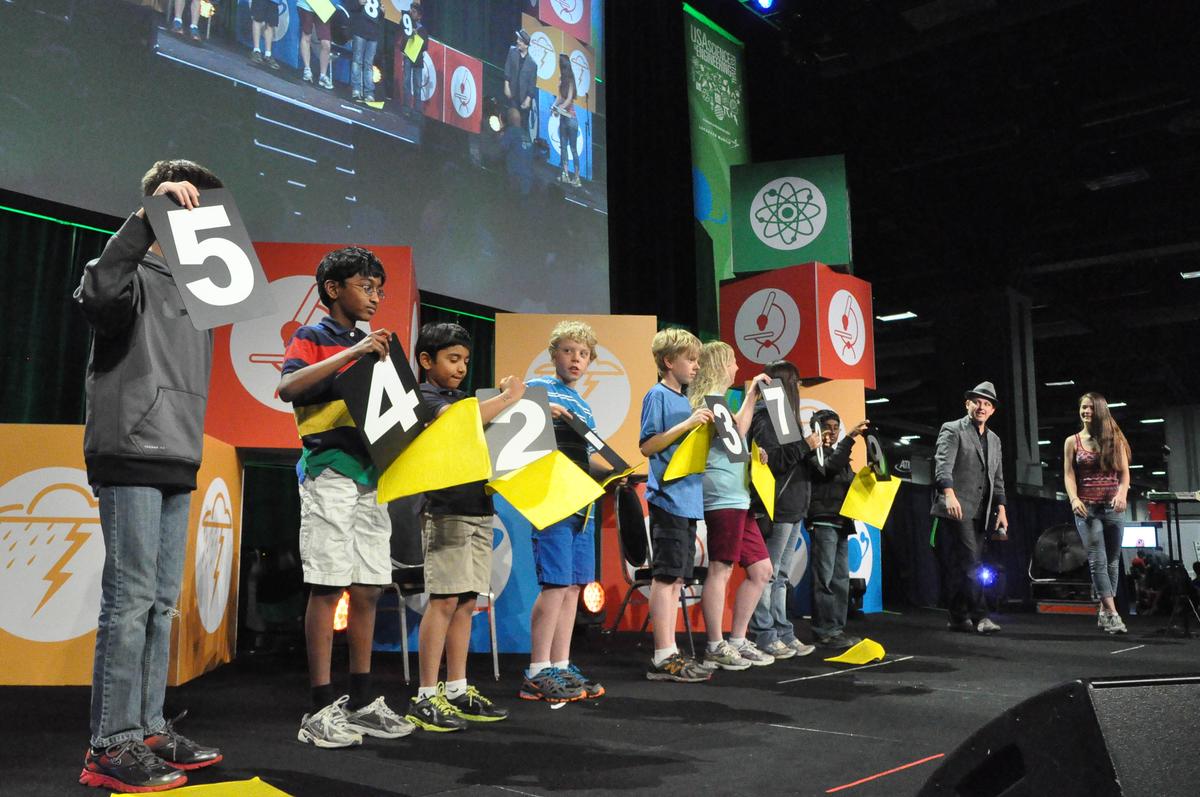
Volunteers display numbers they pulled out of envelopes revealing the exact 8-digit number seemingly chosen at random from a phone book by another volunteer. (Tara MacIsaac/Epoch Times)
Epoch Times was a media sponsor of the 2014 USA Science & Engineering Festival in Washington, D.C., April 26–27. The USA Science & Engineering Festival is a national grassroots effort to advance STEM education and inspire the next generation of scientists and engineers. See more articles on the USA Science & Engineering Festival.





